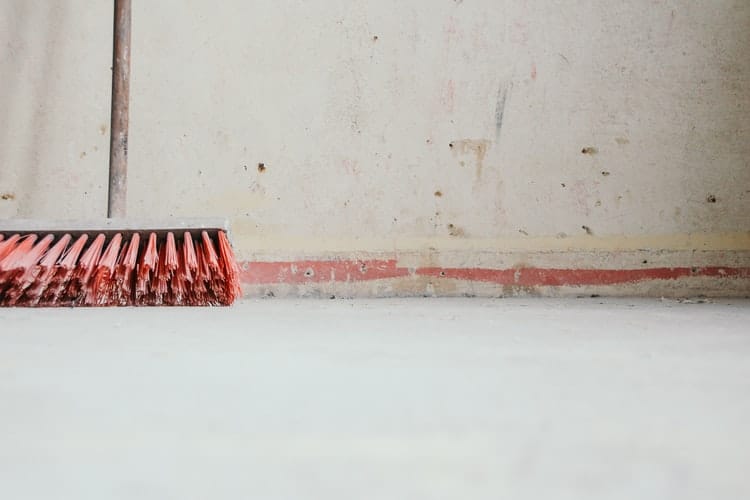Your website is a constant work in progress. It grows and changes along with your business. This isn’t a bad thing; in fact, it’s how you constantly improve your online presence. But it also means that you keep accumulating content, some of it years old, so a virtual spring cleaning may be in order. And when you’re cleaning up your website, you cannot just trash a few old blog posts and call it a day. Instead, you need an SEO cleanup strategy to follow. That way, you can trim the fat off your website without losing any valuable content. So how do you decide on what to clean and what to keep?
Why do you need an effective SEO cleanup strategy?
No matter how hard you try, your website is not going to be perfect forever. Things simply go wrong sometimes – you forget to update all your links after switching to a new domain, you miss a typo in a URL, you neglect to update your contact information after moving to a new office, you leave discontinued and out-of-stock products in your shop… One or two issues are no cause for concern; they happen to everyone. But they add up, and the more content you have, the harder it is to keep track of everything. So, the issues will keep piling up unless you do something about it.

Besides, most content comes with somewhat of an expiration date. Current topics become outdated as people move on to something new. Your audience changes, too – if you’re marketing to Gen Z now, you’ll need a different strategy from the one you used on your older customers. So, freshening up your content is never a bad idea.
Developing an effective SEO cleanup strategy
Like everything else in SEO, cleanup starts with a plan. First, you must identify the things that are hurting your rankings. Then, you need to fix them. And to ensure that you don’t miss anything, you need to be systematic. So here are the steps you need to take:
Start with your website structure
It’s no secret that a well-built site will make your SEO efforts easy. You’ll find it easier to maintain, your users will find it easier to navigate, and even search bots will find it easier to crawl. It truly lays the groundwork for all your other SEO and user experience efforts. So, when you’re planning a cleanup of your website, this is where you start. The most important things to do are to streamline your menus and make sure your link structure is consistent. Cumbersome menus with too many items and subdivisions make navigation more complicated, so focus on the most important pages users may need to access frequently. Inconsistent links often lead to duplicate content or 404 errors, so redirect any pages that don’t follow the pattern.
Take a closer look at your content
Most content marketing strategies focus on producing a lot of high-quality content regularly. So, depending on how long your website has been up and running, you may have quite a few posts and pages published already. But are they all doing their job?

Start with creating an overview of all the content you have. Then, see what the data tells you – which pages are performing best? Which are good at converting customers and which have high bounce rates? This will help you identify underperforming content and spot the weaknesses in your content strategy. However, just deleting underperforming content is rarely a good idea. Instead, update your content and republish it better. And more importantly, learn from your previous mistake and implement that knowledge in your future practices.
Fix broken links
One of the most common yet most frustrating errors users encounter is the 404 one which occurs when they follow a link that leads nowhere. Sometimes, there’s a typo in the URL. Other times, the page has moved to another URL or has been deleted altogether. In the case of outbound links, the external website may be down or experiencing issues. These links do nothing for you, and they can put off your users. So, find them and fix them, either by linking to something else or by removing the link.
Identify and remove bad backlinks
Everyone knows that backlinks are vital for SEO. They come with so many benefits that we’re sometimes desperate to get them and will pursue any website that offers to host them. But backlinks are a double-edged sword. Although they can help you, they can also harm you. Links from suspicious sources will actually lower your domain authority and make it harder for you to rank well. So take a close look at your backlink profile. If there are any links that are negatively affecting your website, reach out to the administrator of the website where the links are hosted and ask them to take the links down.
Optimize images
Your content isn’t just text; it’s also visuals. This type of content requires optimization too. So, during your cleanup, make sure all your images are optimized. Compress those that are too big or use lazy loading to increase page speed. Finally, add alt tags to images and videos that don’t have them – this makes your content more accessible to both users and search bots.

Eliminate duplicate metadata
All content on your website should be unique, including titles and meta descriptions. When you have a lot of content, however, this isn’t always the case. So go over your metadata and see if there are any titles or descriptions similar to each other. This can put them in competition with one another and cause you to be competing with your own content, thus driving rankings on both pages down. Change some of the metadata so that it’s no longer the same, and you’ll see results quickly!
Test the functionality of the website when you’re done
Website cleanup can come with some significant changes to both content and structure. Even though this is supposed to help fix mistakes, there’s always a chance that something will go wrong. So, before you start, always create a backup of your website. Then, when you’re done, test that your website is working as it should. If it isn’t, you can restore the old copy and try again.
How often do you need to implement an SEO cleanup strategy?
Your website won’t simply stop changing and growing after you run through your SEO cleanup strategy. Instead, you’ll continue to create new content and make changes. So there will be opportunities for more mistakes in the future. For this reason, cleanup isn’t a one-and-done type of thing. You need to clean your website up regularly to ensure peak performance. The less time you go between cleanups, the easier and less extensive they will be. Of course, the exact schedule will depend on how much content you put out. But try to do some basic cleanup work every couple of weeks. Then, implement a thorough and extensive cleanup strategy every year.
 seolounge
seolounge
